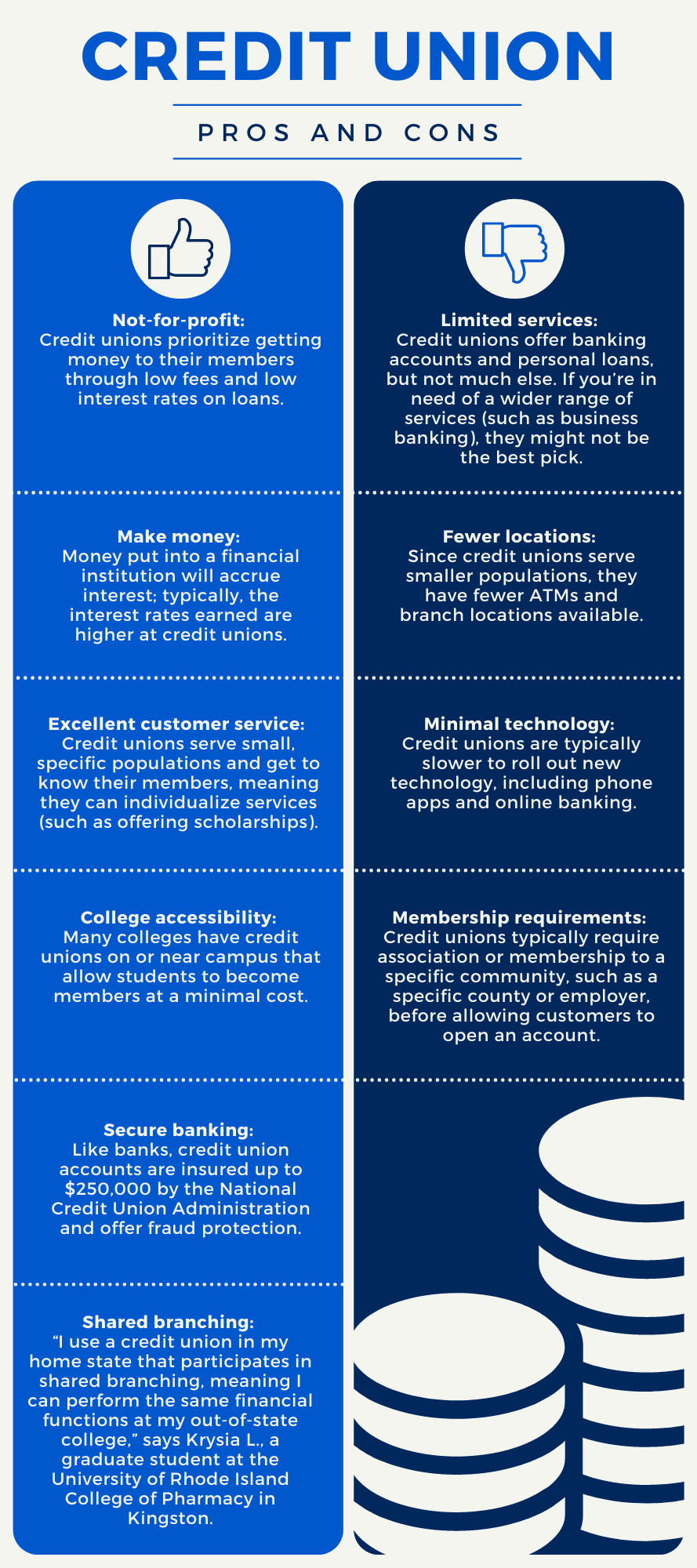Credit Unions in Wyoming: Comprehensive Banking Solutions and Participant Perks
The Ultimate Guide to Understanding Cooperative Credit Union
Lending institution stand as special financial entities, rooted in concepts of mutual support and member-driven procedures. Beyond their fundamental worths, comprehending the detailed workings of credit unions includes a much deeper expedition. Deciphering the intricacies of subscription eligibility, the evolution of services supplied, and the distinct advantages they bring needs a detailed exam. As we navigate with the intricacies of debt unions, an insightful journey awaits to drop light on these member-focused organizations and just how they vary from traditional banks.
What Are Cooperative Credit Union?
Cooperative credit union are member-owned banks that supply a series of financial services to their members. Unlike traditional banks, lending institution run as not-for-profit companies, indicating their main focus gets on offering their members rather than making the most of profits. Participants of a cooperative credit union typically share an usual bond, such as helping the same company, belonging to the very same area, or belonging to the very same organization.
Among the crucial advantages of cooperative credit union is that they commonly provide higher rate of interest prices on interest-bearing accounts and lower rates of interest on car loans contrasted to financial institutions. This is due to the fact that credit report unions are structured to benefit their members directly, enabling them to pass on their revenues in the kind of far better rates and less charges. Furthermore, credit rating unions are known for their customized client solution, as they focus on building connections with their participants to recognize their distinct monetary requirements and objectives.
Background and Development of Lending Institution

The roots of member-owned monetary cooperatives, recognized today as credit report unions, trace back to a time when areas sought options to conventional financial organizations. The idea of lending institution stem in the 19th century in Europe, with Friedrich Wilhelm Raiffeisen commonly attributed as the leader of the cooperative banking movement (Credit Unions Cheyenne). Raiffeisen started the first identified cooperative credit union in Germany in the mid-1800s, emphasizing neighborhood support and self-help concepts
The development of lending institution proceeded in The United States and Canada, where Alphonse Desjardins developed the initial lending institution in Canada in 1900. Shortly after, in 1909, the very first united state lending institution was formed in New Hampshire by a team of Franco-American immigrants. These early credit scores unions operated the basic principles of shared aid, autonomous control, and participant possession.
Gradually, lending institution have expanded in appeal worldwide as a result of their not-for-profit structure, concentrate on offering participants, and using affordable economic products and solutions. Today, lending institution play an essential function in the economic market, supplying community-oriented and available banking alternatives for people and services alike.
Subscription and Qualification Standards
Subscription at a credit report union is usually limited to individuals satisfying details eligibility standards based on the institution's beginning concepts and governing demands. Some credit scores unions might only offer individuals who function or live in a specific location, while others might be tailored to staff members of a particular company or members of a specific organization.
In addition, credit unions are structured as not-for-profit companies, meaning that their main goal is to offer their members instead of produce earnings for shareholders. This concentrate on member solution usually equates into more tailored attention, lower costs, and affordable rates of interest on lendings and cost savings accounts. By meeting the qualification requirements and becoming a member of a cooperative credit union, individuals can access a variety of financial product or services customized to their details demands.
Providers and Products Supplied
One of the crucial elements that establishes cooperative credit union apart is the diverse variety of financial services and items they supply to their participants. Debt unions typically give typical financial solutions such as cost savings and inspecting accounts, finances, and debt cards. Participants can also gain from investment solutions, consisting of retired life accounts and economic planning help. Lots of credit unions provide competitive rate of interest prices on financial savings accounts and car loans, along with lower fees compared to traditional banks.
Additionally, cooperative credit union often provide convenient online and mobile banking options for participants to conveniently handle their finances. They might offer benefits such as common branching, allowing members to access their accounts at other cooperative credit union throughout the country. Some lending institution likewise supply insurance coverage items like home, car, and life insurance to assist members safeguard their properties and liked ones.
In enhancement to monetary solutions, cooperative credit union frequently take part in community outreach programs and monetary education and learning campaigns to sustain their participants in achieving their monetary objectives.
Advantages of Financial With Cooperative Credit Union
When thinking about financial organizations, discovering the advantages of banking with credit unions exposes one-of-a-kind benefits for members looking for personalized service and affordable rates. Unlike big financial institutions, credit history unions are member-owned and focus on structure strong connections with their participants. On the whole, banking with a debt union can provide a much more tailored, cost-effective, and member-centric Credit Union in Wyoming financial experience.
Final Thought

Debt unions are member-owned monetary organizations that supply an array of banking services to their members. The idea of credit unions come from in the 19th century in Europe, with Friedrich Wilhelm Raiffeisen usually credited as the pioneer of the cooperative financial motion.The advancement of credit rating unions continued in North America, where Alphonse Desjardins established the very first debt union in Canada in 1900. Credit report unions commonly offer standard financial solutions such as savings and examining accounts, fundings, and credit cards.When considering financial organizations, checking out the benefits of financial with debt unions discloses one-of-a-kind advantages for participants looking for customized solution and affordable rates.